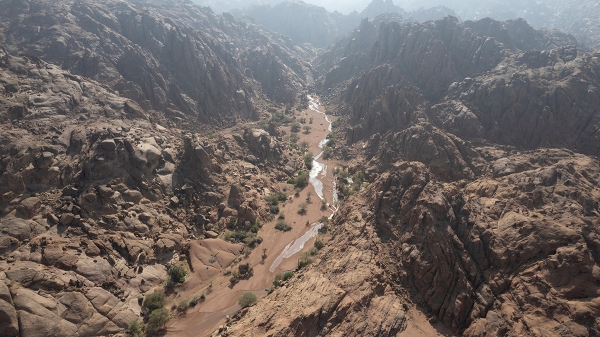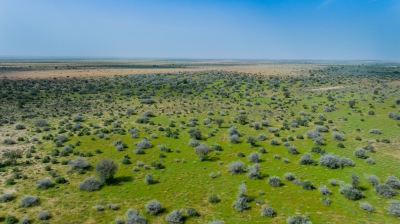



Wildlife Conservation in the Kingdom of Saudi Arabia involves the protection, development, and safeguarding of diverse wildlife species and habitats across the Kingdom. Several laws have been issued for wildlife conservation in the Kingdom, including the Law on Wildlife Protected Areas established in 2015 and the Environmental Law introduced in 2020.
Commitment to wildlife conservation in Saudi Arabia
Wildlife conservation efforts in the Kingdom trace back to the Founding King Abdulaziz Bin Abdulrahman Al Saud, who championed the preservation of endangered species in the Kingdom's territories. Inspired by his commitment, scientists who had previously visited the Kingdom to study its rich biodiversity opted to name the desert lark native to the Arabian Peninsula Ammomanes deserti azizi, reflecting the name and legacy of King Abdulaziz.
Entities responsible for wildlife conservation
Government entities are responsible for wildlife conservation in the Kingdom. These include the Ministry of Environment, Water, and Agriculture, the National Center for Wildlife, the National Center for Meteorology, the National Center for Environmental Compliance, and the National Center for Vegetation Cover Development and Combating Desertification. The Special Forces for Environmental Security, a sector of the Ministry of Interior, is responsible for regulating, monitoring, and protecting the environment and wildlife, not to mention achieving sustainability and enforcing environmental laws.
Protecting wild fauna and flora
Aseer National Park, established in 1981, is the Kingdom's first wild fauna and flora reserve. The Kingdom is home to twenty-three nature reserves, comprising eight royal reserves, ten managed by the National Center for Wildlife, and five overseen by the Royal Commission for AlUla.
Nature reserves in the Kingdom are estimated to cover approximately 16.86 percent of its total area.
Related quizzes
Related articles

